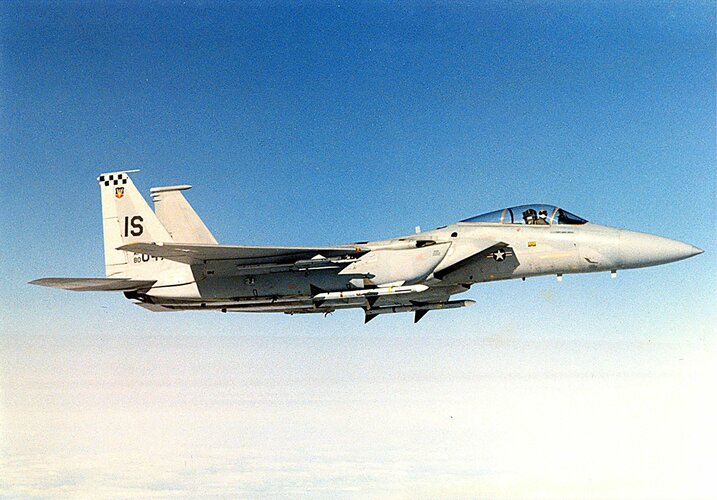[...]Strike Eagles And FAST Packs
Although details of Israel’s startlingly long-ranged attack were kept out of the public eye following the mission, US intelligence services were surely aware of exactly how the mission was executed after the fact. The use of lightly modified F-15C/D Bazs undoubtedly gave further heft to the then finally blossoming F-15E Strike Eagle program, which had been envisioned in different configurations by McDonnell Douglas and the USAF as far back as the mid 1970s.
The F-15E’s official first flight, after the demonstrator beat out the F-16XL during a fly-off competition, would occur just a year after Operation Wooden Leg, with its introduction into USAF service occurring in 1988, although without many of its most advanced features available.
One of the features that the F-15E would be built with was conformal fuel tanks, otherwise known as “FAST Packs,” as in Fuel And Sensor Tactical Packs. These flank hugging 849 gallon tanks were not new to the F-15 with the advent of the Strike Eagle, in fact they were envisioned as an option for the F-15C/D and even retrofittable to the A and B models early on, with the first test flight being flown with them attached to an Eagle in the mid 1970s. They were envisioned to carry everything from fuel to cargo, although the majority of these concepts never made it to fruition.
USAF Eagles only took limited advantage of FAST packs, with some jets deployed to Iceland or stationed in Alaska using them sporadically for the long-range air sovereignty role. The IAF on the other hand saw the great utility in these conformal fuel tanks, not just to enhance range, but to make their air superiority focused Bazs true multi-role heavy fighters.
Like those found on the F-15E, F-15 Baz’s conformal tanks could be fitted with hardpoints for air-to-air missiles or for bombs. This allows for the Baz to fly missions with a pair of underwing tanks and even a centerline tank while still being able execute air-to-ground missions. Today, many Bazs can be seen fitted with indigenously developed FAST Packs built by IAI, but the fact is these were flying on Bazs many decades ago.
By many accounts, they we integral in giving the aircraft flown on Operation Wooden Leg enough range to make the mission possible, as their two wing stations were filled with one GBU-15 each, and their centerline station was fitted with the data-link pod needed to control these weapons. As a result, there was no room for external tanks aside from the FAST packs.
The IAF’s love affair with conformal fuel tanks continues today, not just on the remaining Baz fleet, but also on every fighter aircraft ordered since the early 1990s. Additionally, fuel is not the only thing they carry. Sensors and emitters can also be fitted within them, giving the Baz an entire range of secondary mounting options beyond just its stock hardpoints. [...]





